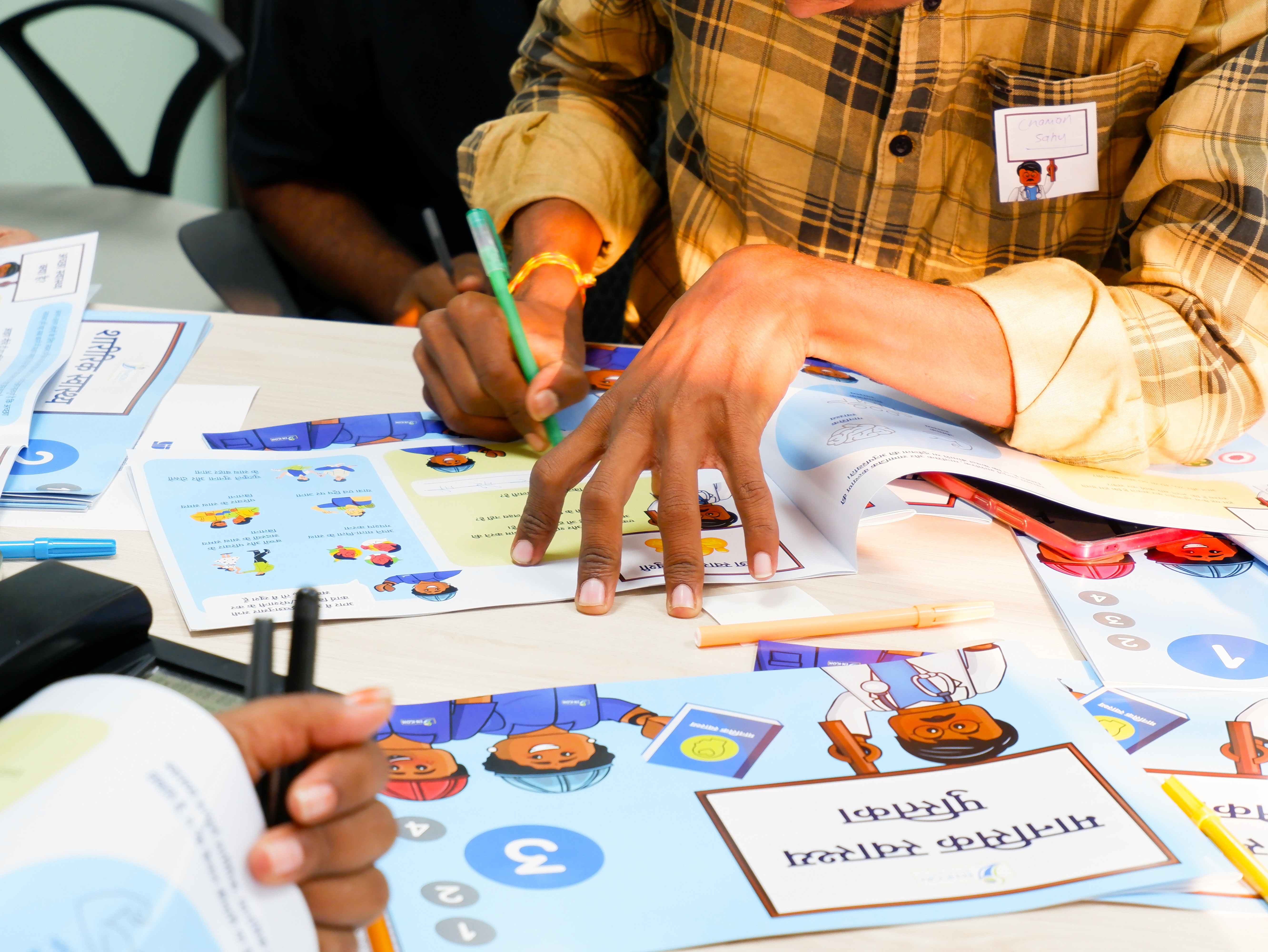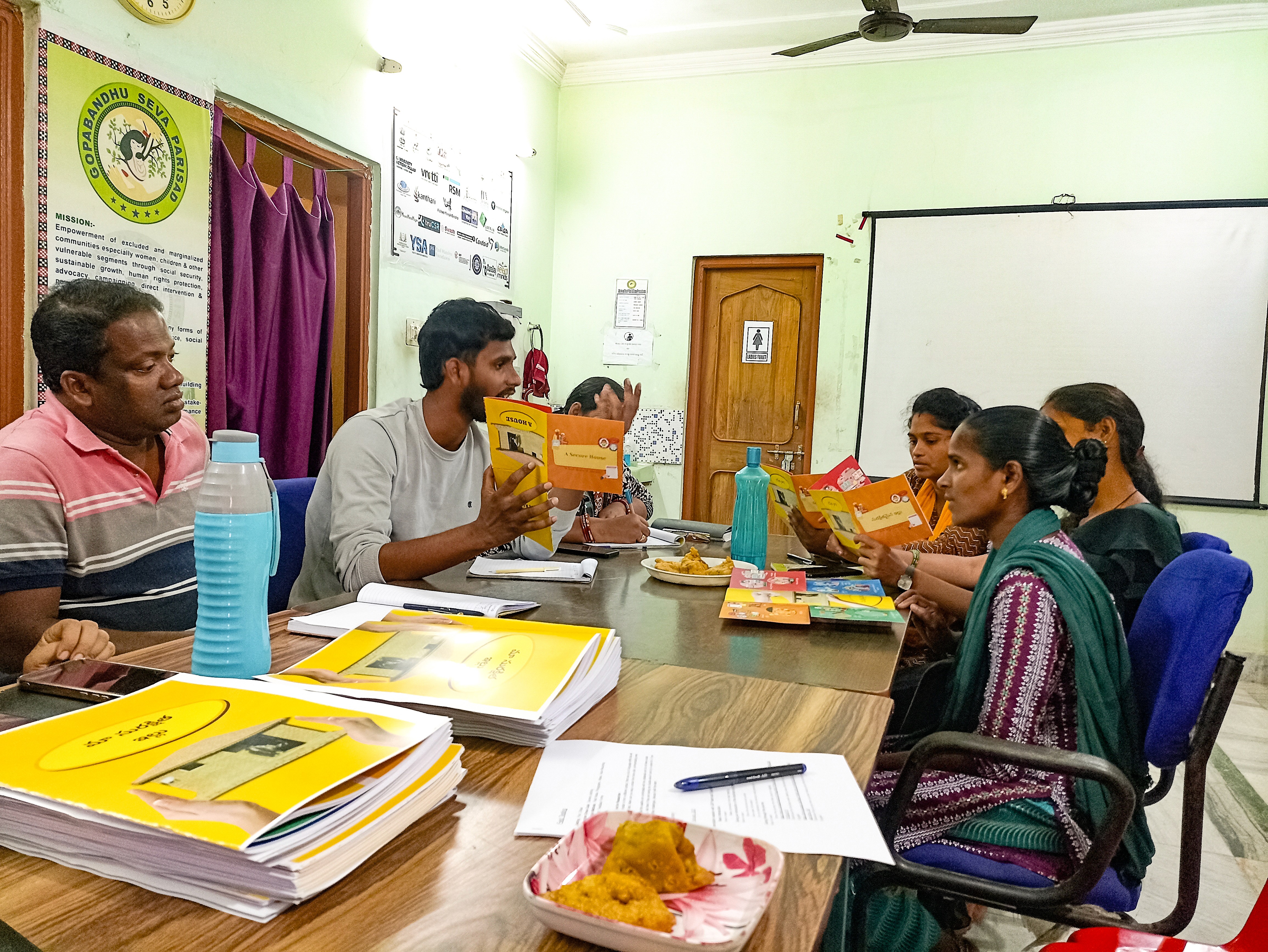Impact Communication
September 12th, 2025
Why the Format of a Tool Can Make or Break Your Program
How to choose the right format for your program implementation tool
Ankita Mirani, Social Designer and Founder @Social Innovation Studio
Archana A S, Communication Lead @Social Innovation Studio
Photo credit: Social Innovation Studio
What’s Inside:
Think about it. You've spent months crafting the perfect message. Your content is research-backed, culturally sensitive, and addresses a real community need. You roll it out with confidence, only to watch communities nod at the beginning and continue exactly as before later on.
Why does this happen so often, even with strong communication?
In this comprehensive blog, we're exploring why great communications often fail to create change, and it has everything to do with a decision most programs make without realising its power: the format.
Because the way your message is delivered matters just as much as what it says. The format of your tool carries meaning, and it decides how people engage, relate, and act.
The Invisible Barrier Between Good Content and Real Change
After working with communities across diverse contexts, we’ve realised that the medium truly is the message.
When a community dealing with sensitive social issues receives a dense PowerPoint or a heavy policy document, it unintentionally sends a message that the communication wasn’t designed for them.
Your format reflects your assumptions about people’s time, comfort, and literacy levels. Get that wrong, and even the best information becomes something they store away instead of using.
The Real Questions to Ask
Successful behaviour change tools start with the right questions. Before designing, ask:
Who is this tool really for: field teams or community members?
What do they need to hear, and in what form will it feel most comfortable?
How can we make it inclusive for people with lower literacy levels?
How can we make it relatable so they see their own story in it?
This shift changes everything.
For example, a family facing financial stress doesn’t need a thick money management workbook. They need short, doable steps that fit naturally into their daily routine.
When to Use What: Choosing the Right Format
Key insight: Behaviour science tools work because they meet people where they are, not where we think they should be.
Here’s how to choose the right one:
1. Flipbooks
When to use:
To spark curiosity and ease people into new or sensitive ideas. Perfect when attention spans are short or pressure is low.
Best for:
Field teams: Easy to carry, visual, and not dependent on tech
Community engagement: Great for building awareness and starting dialogue
Sensitive topics: Low-literacy friendly when designed in the local context
2. Videos
When to use:
When you need to capture attention, build emotion, or show behaviour in action.
Best for:
Explaining complex ideas visually
Building relatability through real stories
Reaching wider audiences through WhatsApp or community screenings
3. Workbooks
When to use:
When you want reflection, learning, and active participation.
Best for:
Training sessions with field teams or communities
Skill development exercises
Group learning where “doing” is part of understanding
4. Posters
When to use:
To reinforce your message. Posters work best when paired with other formats as visual reminders or cues.
Best for:
Quick tips or reminders
Follow-up reinforcement in community spaces
Highlighting helplines or program updates
Behaviour Science in Action
Agroforestry Adoption
The problem:
We were developing behaviour science tools for a program, working with farming communities to decode and increase the adoption of agroforestry. Discussing with them, we uncovered some key challenges:
Farmers saw agroforestry as risky and complex
Long-term investments felt uncertain
Technical knowledge wasn’t turning into action
Income concerns outweighed future benefits
Our approach:
Cultural resonance: Used familiar characters like Bahubali and Pushpa to build trust
Tangible storytelling: Turned five-year plans into visual journeys showing farmers’ progress from investment to income
Multi-format accessibility: Created comics, booklets, presentations, and brochures so both farmers and field teams could learn in their preferred way
Behavioural frameworks: Applied COM-B, Stages of Change, and Nudge Theory to tackle barriers at every stage
The outcome:
Agroforestry stopped being an abstract idea and became a relatable, step-by-step journey. Farmers could see themselves succeeding in the story, guided by characters they already trusted.
For a closer look at how behaviour science shaped this outcome, read the complete case study. Know more!
From Information to Impact
The right format makes the difference between “heard” and “understood”.
When communication feels simple, local, and human, it moves from awareness to real behaviour change.
At Social Innovation Studio, we help design communication tools that bring your strategy to action at the grassroots, the kind of tools that communities use and own.
Let’s discuss your challenges and think through solutions together. WhatsApp Us
Looking to solve the root causes in your programs?
Get In Touch With Us










